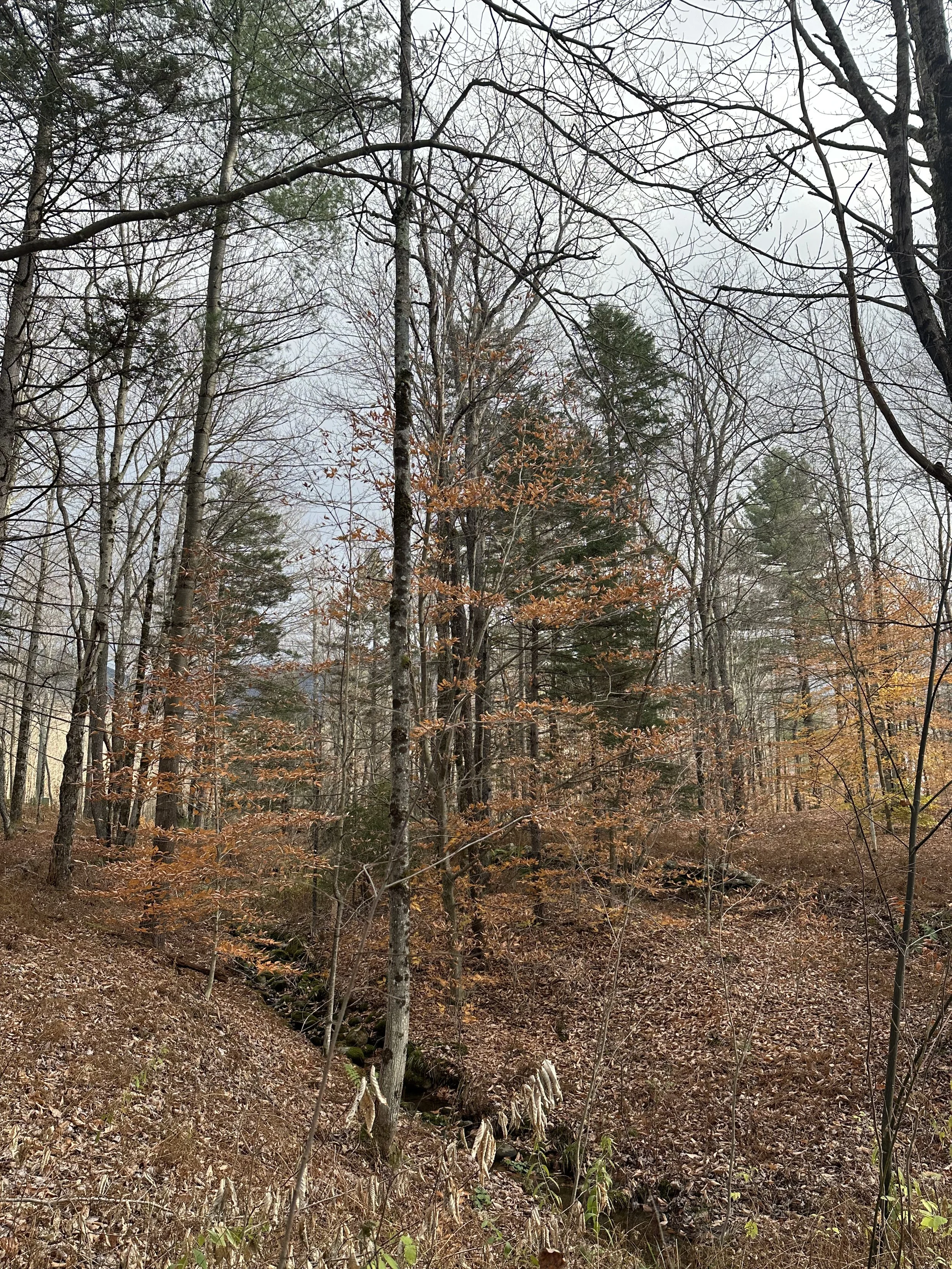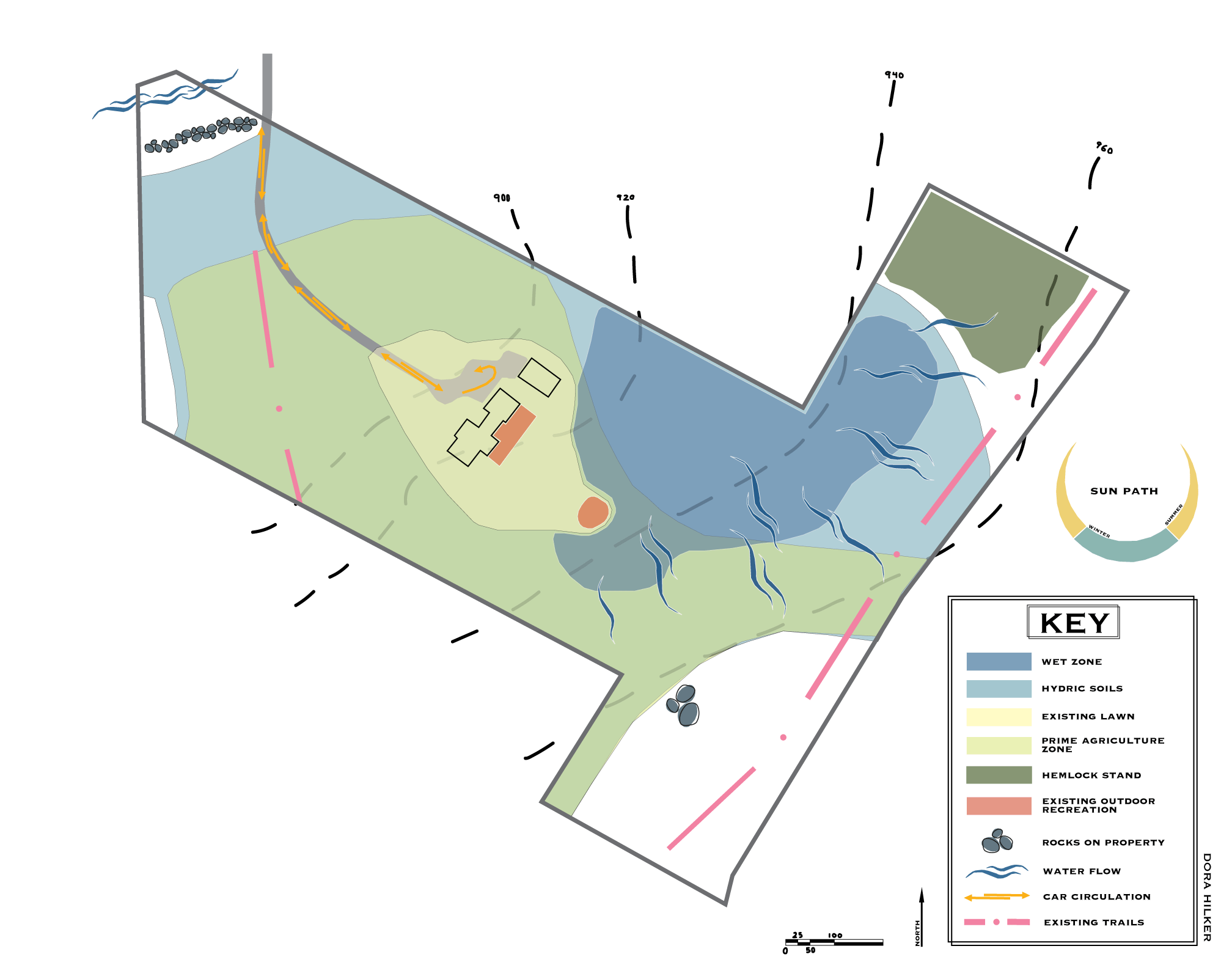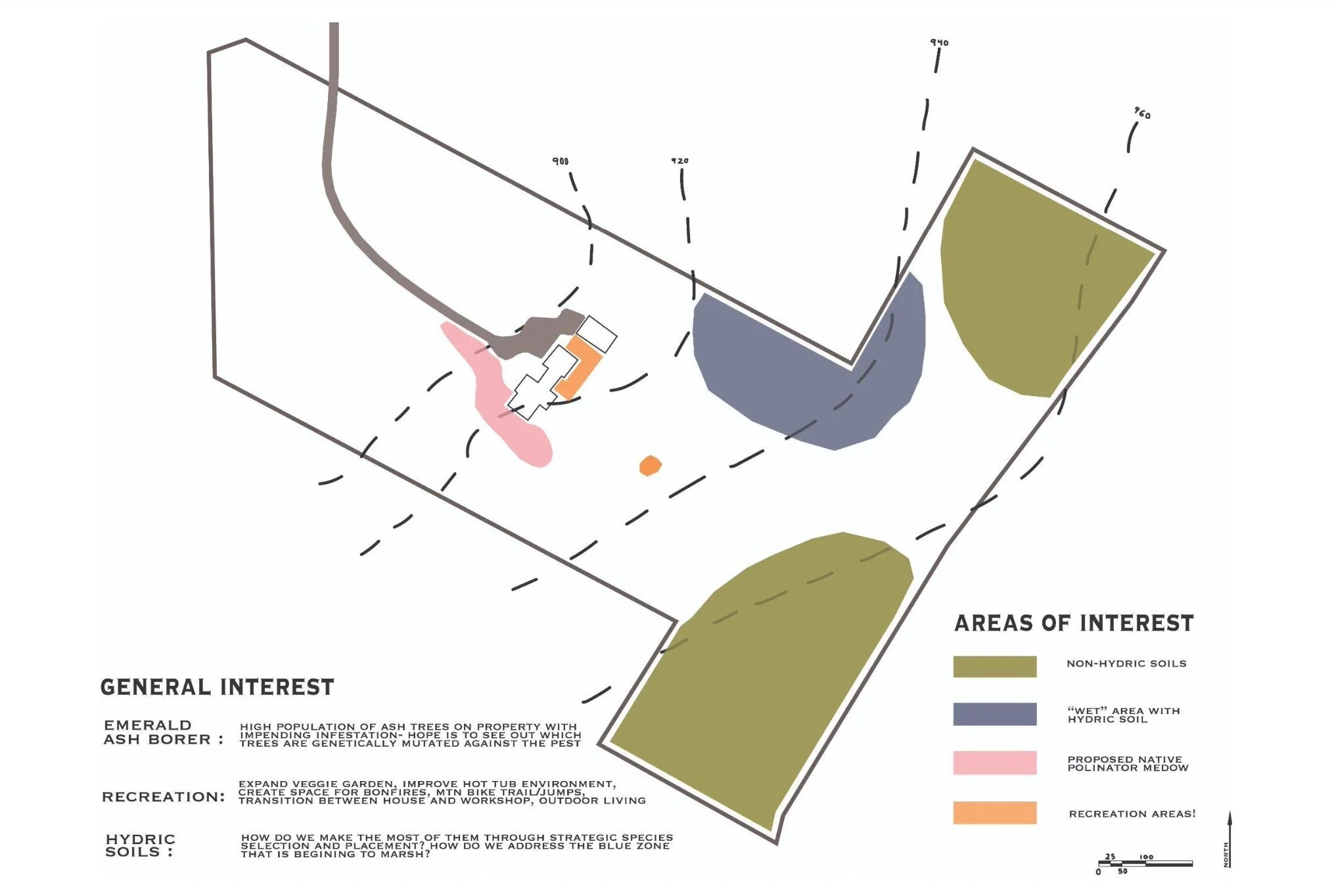Chads Road, Underhill, Vermont
Chads Road was a project that came to me in the winter of 2024. These residential clients were seeking further information on their land as way to help inform their use of it. Seeking to make structural and functional improvements, the main goals included: selective deforestation, erosion prevention, space for recreating, and informed trail making.
Through an initial walk through the land, this expansive forested land showed its objective raw beauty. Situated at the base of Mount Mansfield, this land sloped and turned while maintaining views of the mountain. With this in mind, the clients hoped to improve sight lines, wanting to know which trees and species were best to cut down. They wanted to establish a forest floor, increasingly wet and warmer ecosystem. Neighborhood trails around the property, questions of how best to choose these paths and what to plant around them rose. Additionally, I learned how to implement permaculture thologies and utilize existing saplings. Ecological health is at the forefront of all concerns.
Site Analysis
Working at one inch equals one hundred feet, the magnitude of this property is undeniable. With this in mind, I concentrated my research around soil type and functionality. There is so much variability in soil type and soil function on this site, and noting existing features that serve as limiting factors or elements to be built upon.
Historically, this land was a part of the Vermont reforestation around one hundred years ago. Much of Vermont’s landscape was a part of the New England lumber boom in the early 1800s, then transferred to sheep and cattle. In the early 1900s, around 70% of Vermont’s land was deforested, but with a huge investment into reforestation, that statistic has flipped today. Given this, much of Vermont’s forest is new growth, and this plot is no exception. Old growth is virtually nonexistent, and soil variants are consistent with old cattle grazing lands.
Hydric Soils
This property is dominated by hydric soils, or soils once flooded or saturated, leading to anaerobic (little oxygen) conditions in the upper soil layers. Hydric soils have a hard time supporting vegetation and sub-soil organisms like worms. This discovery explained much about the site at hand, including sharp lines of vegetative success and species variation. Hydric soil types on this site include Cac – Cabot Silt loam (primary soil type) and CbD Soil- Cabot silt loam, a stony counterpart (secondary soil type). Species that thrive in these conditions are Red Maple, White Cedar, Black Ash, Fir, and Lowland Spruce.
Recommended Plantings
Notable conclusions of this research include hydric/non-hydric soil typing, opportunity for pollinator meadow, wet areas with hydric soils and non-hydric soil areas, and the opportunities they present.





